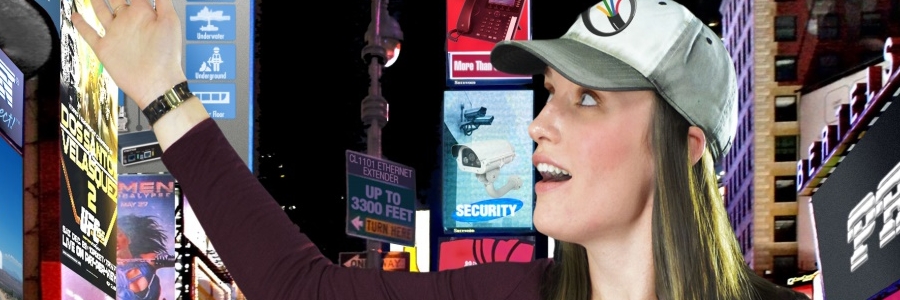Digital Signs: Can Power-over-Ethernet (PoE) Make a Difference?

Is every area of life going digi-tech? Or is it just me? At least one particular market—digital signage—seems to fall squarely into that trend.
Writing for SKYKIT, Irfan Khan, predicted: “Rather than an afterthought or a separate effort, [digital signage is] going to become more deeply linked to all aspects of connecting with and serving customers…and linked up to social media. This [growth] will be aided by emerging and increasingly widely available tech like high-resolution LCD and LED screens.”
In nearly every business sector today, including transportation and industrial applications, digital signage has become a driver as well as a consequence of the digital revolution.
With good reason. The technology offers some powerful advantages:
-
- Sizzle! Eye-catching, engaging—even animated—visual appeal.
- Eliminate recurring expenses for updating, printing, and distributing traditional signs, placards, menus, billboards, etc.
- Revise and update on-screen messages by the second including advertiser rotation.
- Automate varied messaging by time-of-day, day-of-week, outdoor temperature, or whatever parameter suits your fancy!
- Advertisers can instantly improve the relevance of their campaign program (e.g. a local news broadcaster could swap in a promotion for the top story in the upcoming evening show).
What about restaurants, for example? According to Digital SignageToday fast-food chains typically experience a 10 to 50% boost in sales after installing digital menu boards. Among quick-service restaurants (QSRs) studied, 11% achieved payback on their investment within 6 months and another 30% within 12 months.
In 2013, ViewSonic.com predicted the use of small-screen digital displays would grow exponentially in following years.
What do you think? Were they were right? Is there a downside?
Clearly, by delivering visually compelling messages, easily updated in real time, digital signage solutions are faster, more cost-effective, and greener than traditional static signage options.
In retail environments, small-screen display panels can position promotions and product highlights directly in front of customers at the exact location where they are examining a product. A digital photo frame, for example, on a retail shelf or counter, might work as an ideal special offer or product information presentation solution.
In factories and other workplaces, digital display screens can provide easily-revised, up-to-date work instructions, safety regulations, and company announcements. The list of potential benefits and possible applications for digital signage displays goes on and on.
What About the Downside? [watch for Part II]…
>>Or you can read the full article here.
Digital Signage Revolution: How Power over Ethernet Changes the Game

